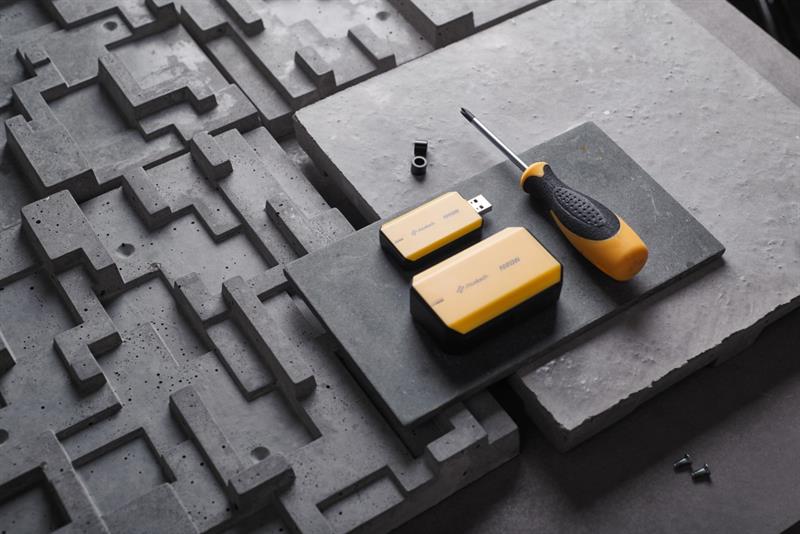Implementing predictive maintenance policies is one aspect of this transformation. Remotely monitoring the condition of equipment in the field – such as turbines, refrigerators, machine tools, and HVAC equipment – helps improve the customer experience by avoiding inconvenient and expensive downtime. From the supplier’s point of view, scheduling essential repairs during planned maintenance is less costly than emergency response.
Whether delivered within a straightforward customer-support package or as part of a complex digital twin setup that models customers’ equipment continuously in real-time, remote condition monitoring supplies the basic data that can let suppliers know how the equipment they delivered is performing in the field. The long-term trend data can also highlight any design weaknesses that need to be fixed.
With the increasing infusion of AI-based applications in the cloud, services are becoming available that can analyse machine-health data, such as vibration, temperature, or audible indicators. Using techniques such as pattern analysis and threshold monitoring, these applications can recognise the signs of impending failures in components such as motor bearings or mechanical structures, and use the knowledge to generate alerts and even predict the time of failure.
This can help to minimise down time by allowing repairs to be scheduled for a convenient time that has the least impact on the business’ output – at night for example, or in between shifts, to minimise impact. Proper analysis of the data can allow the exact nature of the problem to be identified, the parts needed for repair to be identified and ordered in time, and the staff with the necessary technical skills booked in advance. All of this can help to reduce the time needed to effect the repair and return the equipment to service, avoiding unexpected delays.
Sensing and Connectivity Challenges
In the field, suitable sensors are needed on the equipment. Various combinations of sensing modalities, such as inertial, acoustic, magnetic, pressure, and temperature sensing may be required. Bringing all these elements together to create a sensor that can be deployed in the intended context and can withstand the harshness of an industrial environment requires significant engineering effort.
Creating a solution calls not only for sensor design competencies but also skills in edge computing, wireless communication and networking.
An alternative is to find a suitable platform that is ready to deploy and contains the required sensing capabilities, embedded processing, network connectivity already built-in and fully functioning.
One example is the Shiratech iCOMOX intelligent condition monitoring box: an open embedded sensor-to-cloud platform built around an Arm-based application processor that integrates five high-quality sensors. These include two low-noise, low-power 3-axis accelerometers for vibration sensing, a 16-bit temperature sensor, a magnetic field sensor, and a MEMS microphone specially selected for its high dynamic range, low distortion, and flat frequency response that make an ideal choice for diagnostics applications.

The box also integrates an IEEE 802.15.4e communication SoC that leverages SmartMesh IP that enables robust and scalable communications over extended distances in tough industrial environments. iCOMOX is connected to cloud services using a SmartMesh IP gateway, which is available from Shiratech, and can also operate as a standalone sensor if required. More than 4000 units of iCOMOX have been shipped to date.
Completing the Solution
In addition, users need support to configure and implement a complete end-to-end condition-monitoring solution. Shiratech has recently opened a new European technical and sales office near Frankfurt in Germany to enhance accessibility of the required services.
The office has been setup to deliver tailored design and manufacturing including integrated hardware and software solutions, and accelerate turnaround and time to completion of customers’ projects.
The portfolio of services available also includes supply-chain management, Design for Manufacture (DFM), and production expertise. In addition, leveraging direct connection with the main office in Israel, and the wider global network of Shiratech technical centres.
Conclusion
The industrial Internet of Things (IIoT) is opening up countless opportunities to improve current practices and develop new services that can enable equipment providers to become service partners to their customers. Intelligent condition monitoring is a powerful tool in the kit, which can enable predictive maintenance as well as helping improve new product designs in the longer term.
Choosing a turnkey sensor-to-cloud platform such as iCOMOX enables companies to implement an end-to-end condition-monitoring solution with minimal investment, and quickly begin exploring the advantages that are available.













